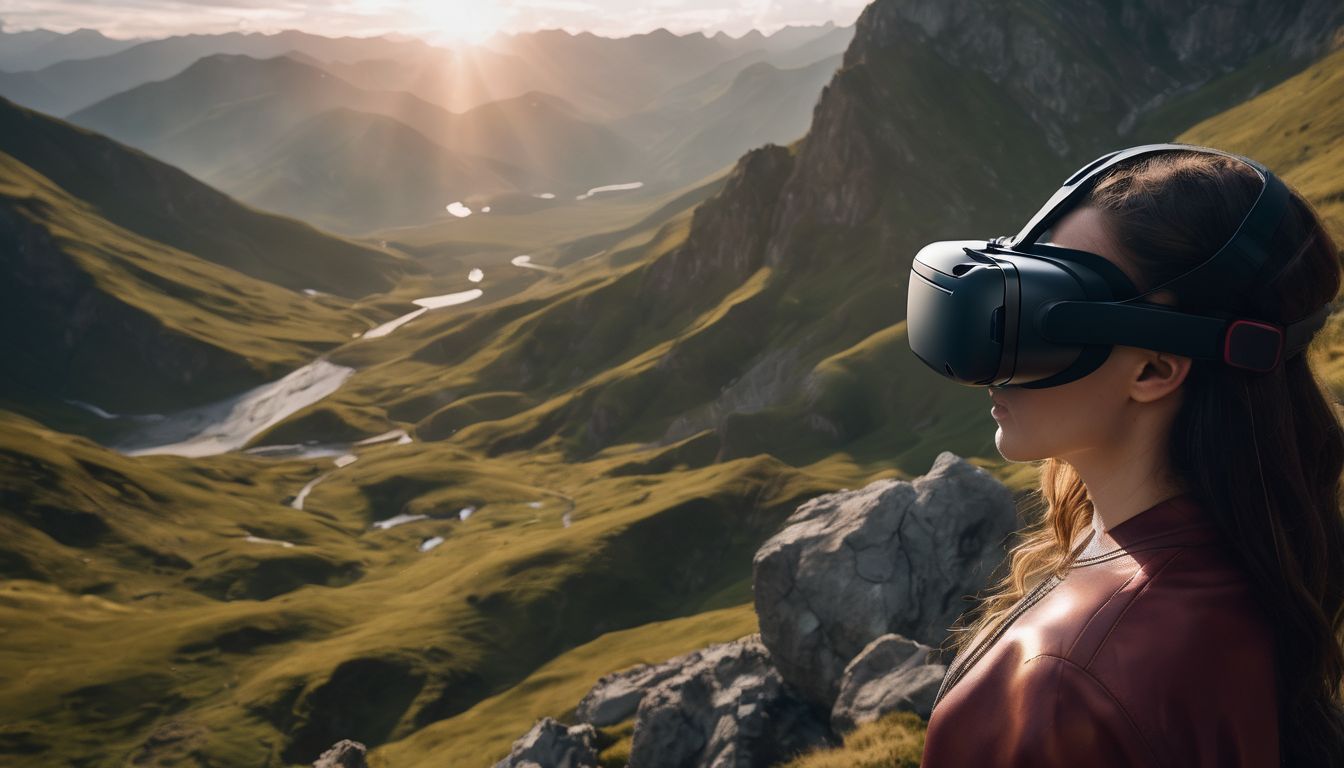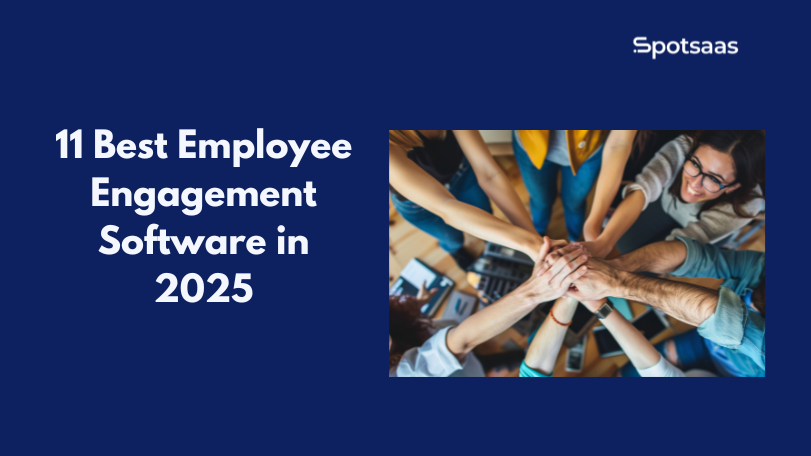Diving into the world of technology, it can be challenging to keep up with emerging trends like mixed reality. This paradigm-shifting tech marries our physical environment with digital elements, creating a unique, interactive experience.
Our blog will untangle the complexities of mixed reality for you – explaining how it works, its applications across various industries, and its potential future advancements.
Key Takeaways
- Mixed reality combines elements of virtual reality and augmented reality to create interactive experiences.
- It works by blending the real world with digital elements, using cameras, sensors, and AI technology.
- Mixed reality has applications in marketing, education, entertainment, healthcare, construction/engineering, and manufacturing.
- It offers improved user experiences, enhanced learning/training opportunities, and the potential for medical breakthroughs.
Understanding Mixed Reality
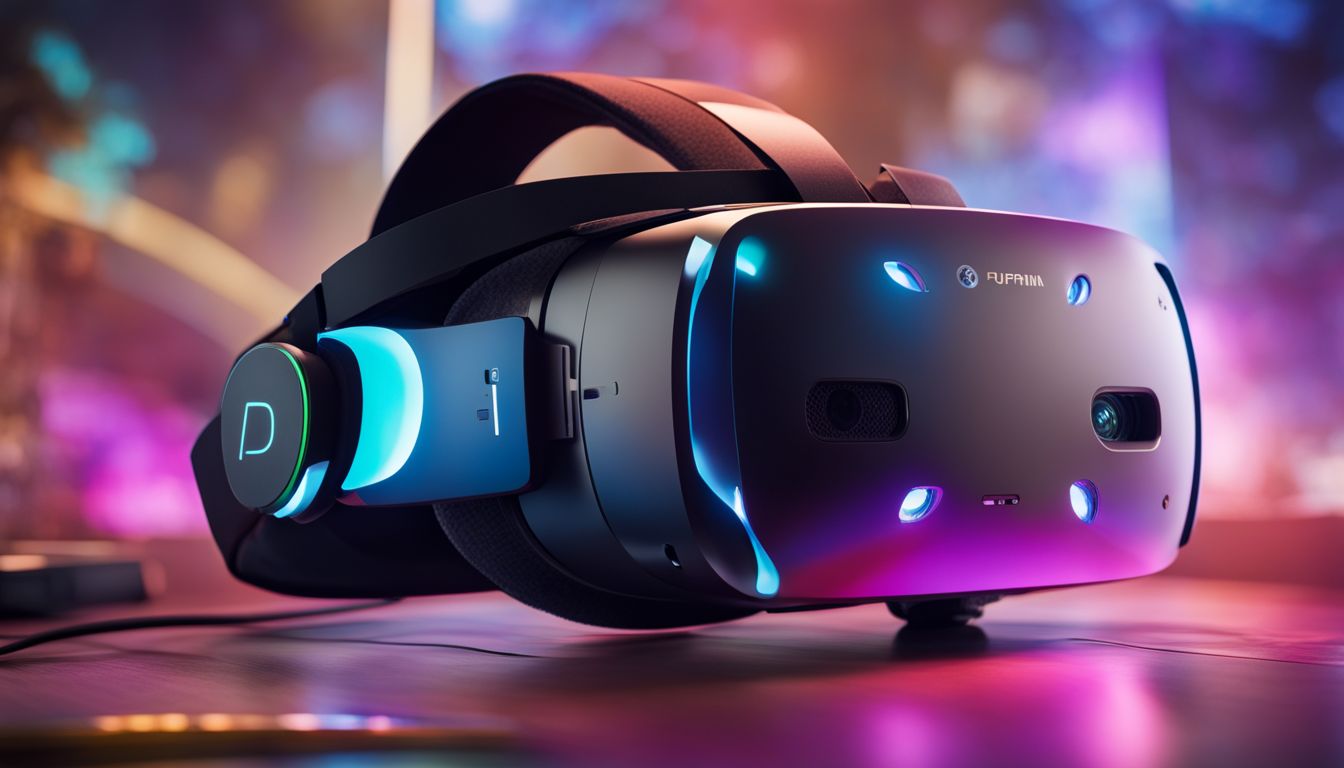
Mixed reality is a technology that combines elements of virtual reality and augmented reality to create an interactive and immersive experience for users.
Definition
Mixed reality is a mix of our real world and an online one. It uses things like cameras, sensors, and special technology. This helps it make sense of space around us. It makes use of parts from both virtual reality (VR) and augmented reality (AR).
Real world actions change what happens to the digital items in this mixed setting. Mixed reality lets users play with computer-made objects as if they were part of the real world around them.
How it works
Mixed reality works in smart ways. Firstly, it uses a mix of real and digital worlds. Physical objects and fake ones exist together. Cameras and sensors help the process. They take in data about space. AI tech makes the space feel real to the user.
The mixed reality spectrum
Mixed reality falls on a scale. This is the mixed reality spectrum. On one end of this scale, you have the real world we live in. On the other end, there’s full digital reality.
This scale also includes augmented and virtual reality. Augmented reality adds digital items to our real world. Virtual reality puts us in a completely made-up place created by computers.
Mixed Reality mixes both ends of this spectrum together. It places digital things in our physical space that can act like real ones would do.
For example, companies like Microsoft are making new tools for mixed reality. They use cameras and sensors that pick up info about a room’s size and shape or your hand movements in it! AI technology then uses this data to make interactive 3D experiences where you can touch or move these objects as if they were really there!
This blend of digital and actual space opens up doors for amazing new ideas and ways of working together! You can design, work on projects with others from afar, learn new skills through hands-on training, play games that feel more real than ever before – all possible thanks to mixed reality.
Uses of Mixed Reality
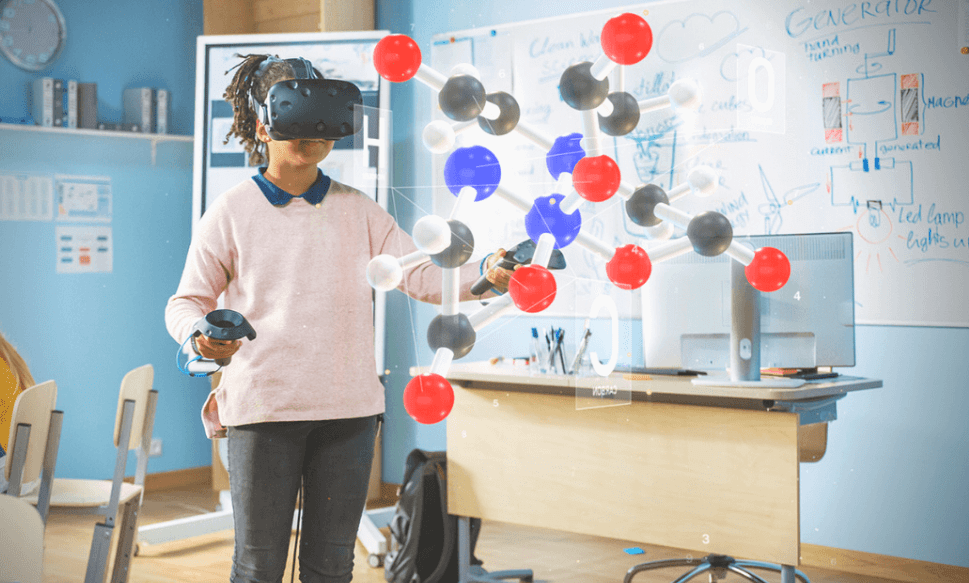
Mixed reality has a wide range of applications including marketing, education and training, entertainment, healthcare, construction and engineering, and manufacturing.
In marketing
Mixed reality has started to make its mark in the world of marketing. Companies are leveraging this technology to create immersive and interactive experiences for their customers. With mixed reality, marketers can showcase products in a virtual space, allowing customers to visualize and interact with them before making a purchase.
This gives businesses an edge by providing a unique and engaging way to connect with their target audience. Furthermore, mixed reality allows for personalized marketing experiences, where ads can be tailored to individual preferences and interests.
This innovative approach is revolutionizing the marketing industry and opening up new possibilities for brands to engage with consumers on a whole new level.
In education and training
Mixed reality holds immense potential in the field of education and training. With its combination of physical and virtual space, it offers exciting opportunities for immersive learning experiences.
Students can interact with digital objects in real-world settings, enabling a more realistic and engaging educational environment. By incorporating 3D visualization and spatial computing, mixed reality enhances understanding and retention of complex concepts.
It also enables collaborative learning, allowing students to work together on projects within the virtual space. This technology has the power to transform traditional teaching methods and provide students with interactive experiences that better prepare them for real-world challenges.
In entertainment
Mixed reality has a significant impact on the entertainment industry. It brings new possibilities for immersive experiences and interactive storytelling. With mixed reality, users can step into virtual worlds and engage with digital objects in real-world spaces.
This creates a more realistic and engaging entertainment experience, whether it’s through gaming, live performances, or virtual tours of famous landmarks. Companies are investing in mixed reality technologies to enhance the way we enjoy entertainment, making it more interactive and visually stunning.
Mixed reality is revolutionizing the way we consume and experience entertainment content.
In healthcare
Mixed reality has the potential to greatly impact the healthcare industry. With its combination of physical and virtual space, mixed reality opens up new possibilities for doctors, nurses, and medical students.
They can use immersive technologies to practice surgical procedures, simulate complex medical scenarios, or visualize patient data in 3D. This improves training effectiveness, enhances diagnostic accuracy, and ultimately leads to better patient outcomes.
Mixed reality also allows for remote collaboration among healthcare professionals, enabling them to work together regardless of their physical locations. Overall, mixed reality holds great promise in revolutionizing healthcare by improving clinical education and enhancing patient care.
In construction and engineering
Mixed reality is making a significant impact in the construction and engineering industries. With its ability to combine physical and virtual space, it offers new possibilities for planning, designing, and visualizing projects.
Engineers can now use mixed reality technology to create immersive 3D models of buildings and structures, allowing them to identify potential issues before construction even begins.
This improves efficiency, reduces costs, and ensures better accuracy in the final result. Workers on-site can also benefit from mixed reality by accessing real-time data overlays that provide instructions or highlight important safety information.
In manufacturing
In manufacturing, mixed reality is transforming the way products are designed and produced. By integrating virtual elements into the physical space, manufacturers can visualize and simulate complex processes before they even happen.
This technology allows engineers and designers to create 3D models of products, test their functionality, and identify any issues or improvements needed. It also enhances collaboration among team members by enabling them to work together in a shared virtual environment.
With mixed reality, manufacturing companies can improve efficiency, reduce errors, and ultimately deliver better products to consumers.
Benefits and Challenges of Mixed Reality
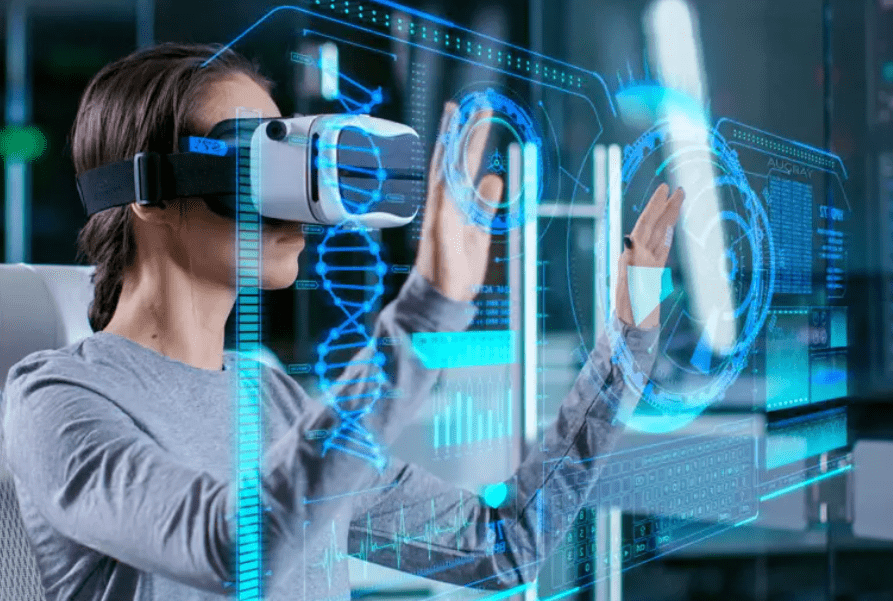
Mixed reality offers improved user experiences, enhanced learning and training opportunities, and the potential for medical breakthroughs. However, it also faces technical limitations and cost challenges.
Read on to discover the fascinating world of mixed reality!
Improved user experience
Mixed reality technology offers an improved user experience by providing a more immersive and interactive environment. Users can interact with virtual objects in real-world spaces, making the experience feel natural and intuitive.
This means that people can have engaging and realistic interactions with digital content, enhancing their overall satisfaction. Mixed reality expands on augmented reality by incorporating virtual elements into the physical environment, opening up new possibilities for creativity, productivity, and collaboration.
As companies continue to develop mixed reality technologies, we can expect even more advancements that will further enhance the user experience.
Enhanced learning and training
In the realm of education and training, mixed reality offers exciting possibilities for enhanced learning experiences. By integrating virtual elements into real-world environments, students can engage in hands-on activities and simulations that make complex concepts easier to grasp.
For example, medical students can practice surgeries in a realistic virtual environment before operating on actual patients. This immersive approach allows for more effective skill development and knowledge retention.
Additionally, mixed reality enables interactive collaboration among learners, fostering teamwork and critical thinking skills. With the potential to revolutionize traditional teaching methods, mixed reality is poised to transform the way we learn and train for the better.
Potential for medical breakthroughs
Mixed reality has the potential to bring about significant breakthroughs in the field of medicine. With its immersive and interactive capabilities, mixed reality technology can revolutionize how medical professionals learn, train, and perform procedures.
Imagine being able to visualize and interact with complex anatomical structures in a three-dimensional virtual space. This would greatly enhance medical education by providing more realistic and hands-on learning experiences for students.
Moreover, mixed reality can enable surgeons to practice intricate surgical procedures in a safe and controlled environment before performing them on actual patients. This not only improves surgical precision but also reduces the risk of complications during real surgeries.
Additionally, mixed reality can assist doctors in diagnosing illnesses by allowing them to overlay digital information onto a patient’s physical body during examinations.
Furthermore, mixed reality technology can facilitate remote collaboration between healthcare professionals from different locations. Through holographic communication systems, doctors can virtually collaborate on diagnoses and treatment plans without physically being present in the same location.
This is especially valuable in situations where specialists are needed but may not be readily available at every hospital or clinic.
Technical limitations
Mixed reality technology, while promising, does have some technical limitations. One limitation is the cost of the hardware required to run mixed reality applications. The cameras, sensors, and AI-enhanced technology needed can be expensive for both individuals and organizations.
Another limitation is the need for a high-performance computer or device to handle the processing power required for immersive experiences. Additionally, there may be challenges in accurately tracking movements and interactions in real-time, which can affect the overall user experience.
Despite these limitations, companies like Microsoft are actively working on advancements in mixed reality technology to overcome these barriers and make it more accessible to a wider audience.
Cost
Mixed reality technology has shown great potential in various industries, but one important factor to consider is the cost. Developing and implementing mixed reality solutions can be expensive.
Companies need to invest in advanced hardware like cameras, sensors, and AI-enhanced technology. Additionally, there are costs associated with software development and customization for specific industry needs.
Training employees to use mixed reality systems also requires time and resources. However, it’s important to note that as the technology advances and becomes more widely adopted, we can expect the cost of implementation to decrease over time.
The Future of Mixed Reality
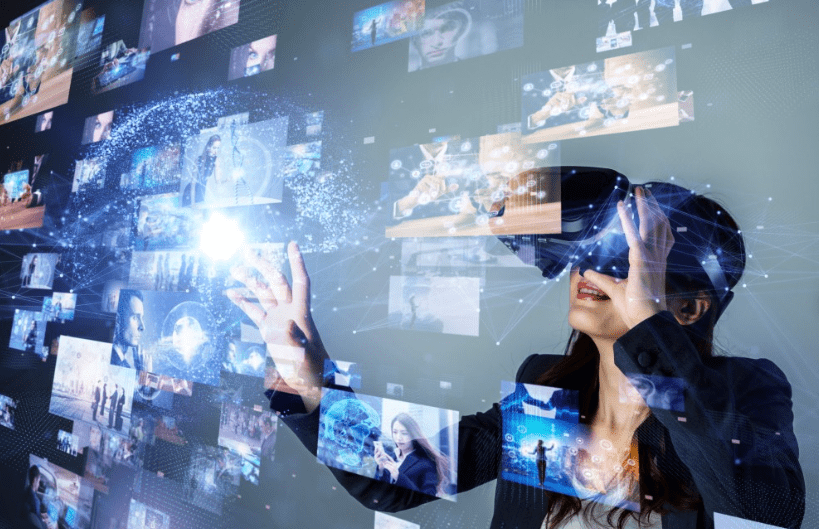
Mixed reality is constantly evolving, with advancements in technology and the potential for widespread use across various industries. Discover how this immersive technology is revolutionizing our world.
Read more to explore the exciting future of mixed reality.
Advancements in technology
Advancements in technology are propelling the development of mixed reality at an unprecedented pace. Companies like Microsoft and other technology providers are actively working on creating more sophisticated and immersive mixed reality experiences.
These advancements include improvements in camera and sensor technologies, as well as AI-enhanced algorithms that enhance the processing of data about physical space. As a result, users can expect even more realistic and seamless interactions with digital objects in real-world environments.
With these technological advancements, mixed reality is set to become a mainstream technology that will have a profound impact across various industries such as gaming, education, healthcare, architecture, and more.
Potential for widespread use
Mixed reality has the potential for widespread use in various industries. With its ability to combine virtual and physical space, it can revolutionize fields such as gaming, education, healthcare, architecture, and more.
This technology expands on augmented reality by incorporating virtual elements into the real world, providing users with a more immersive experience. Companies like Microsoft are actively developing mixed reality technologies, ensuring that this next-generation technology continues to advance.
As the capabilities of mixed reality expand and improve over time, we can expect it to have a significant impact across different sectors and become increasingly prevalent in our everyday lives.
Impact on various industries
Mixed reality has the potential to greatly impact a wide range of industries. In gaming, it can provide more immersive and realistic experiences for players. In education, students can learn through interactive and visual simulations.
Healthcare professionals can use mixed reality for training, diagnosis, and treatment purposes. Architects and engineers can visualize designs in 3D before construction begins. Manufacturers can improve efficiency and accuracy in production processes.
Mixed reality opens up new possibilities in these industries, revolutionizing the way things are done and enhancing productivity across the board.
Conclusion
Mixed reality is an exciting blend of the physical and digital worlds that offers a better side of technology. With its immersive experiences and natural interactions, it has the potential to revolutionize various industries like gaming, education, healthcare, and more.
As advancements continue in mixed reality, we can expect to see even greater integration of the real world with virtual elements, opening up new possibilities for creativity and collaboration.
Get ready to explore a world where imagination becomes reality!
Frequently Asked Questions
What is mixed reality?
Mixed reality is a technology that combines elements of both virtual reality and augmented reality, allowing users to interact with digital content in the real world.
How does mixed reality differ from virtual reality?
Unlike virtual reality, which creates immersive simulated environments, mixed reality overlays virtual objects onto the real world, enhancing and interacting with the user’s surroundings.
What are some examples of mixed reality devices?
Examples of mixed reality devices include Microsoft HoloLens, Magic Leap One, and Oculus Quest 2 with Passthrough+ mode enabled.
How can mixed reality be used in various industries?
Mixed reality has applications in industries such as gaming, education, healthcare, architecture, design, and remote collaboration by providing immersive experiences and enhancing visualization.
Is it safe to use mixed reality for long periods of time?
When used responsibly and according to manufacturer guidelines, using mixed reality for extended periods should not pose any significant health risks. However, taking occasional breaks is recommended to rest your eyes and avoid discomfort.

